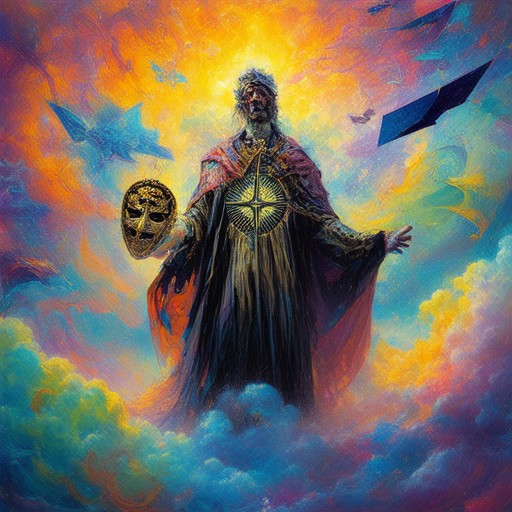Embark on a transformative journey through the world of creative storytelling, where every narrative is a unique adventure waiting to unfold. In today’s fast-paced digital landscape, the power of storytelling has never been more evident, offering brands, businesses, and individuals alike the ability to captivate audiences and leave lasting impressions. Whether you’re crafting a compelling brand story, exploring innovative project ideas, or seeking career opportunities in the ever-evolving field of storytelling, the creative journey is a path filled with endless possibilities. From mastering the essential components of storytelling to discovering creative ways of expression, this guide will walk you through the key elements that will help you unlock your full potential. Get ready to reimagine the art of storytelling and transform your creative vision into reality.
Key Takeaways
– Master the Four Types of Storytelling: Tailor your narrative to your audience by choosing between Personal (for deep connections), Fictional (for entertainment), Factual (for education), or Motivational (for inspiration) storytelling styles.
– Apply the “Show, Don’t Tell” Technique: Enhance immersion by using sensory details and actions to convey emotions, avoiding direct explanations that disrupt the narrative flow.
– Avoid Common Mistakes: Refrain from excessive telling, ensure sufficient sensory details, and avoid relying solely on dialogue or narration.
– Understand the Five Storytelling Stages: Structure your story effectively with Exposition, Rising Action, Climax, Falling Action, and Resolution to captivate and satisfy your audience.
– Leverage Descriptive Language and Character Actions: Use vivid descriptions and focus on character behavior to reveal deeper truths and keep readers engaged.

What are the 5 C’s of storytelling?
The five Cs of storytelling are essential elements that help create an engaging and memorable narrative. They are:
- Character : The central figure around whom the story revolves. This includes the protagonist’s development, motivations, and growth throughout the story.
- Context : The setting, time period, and background information that provide the foundation for the story to take place.
- Conflict : The problem, challenge, or obstacle that the character faces, driving the plot forward.
- Climax : The highest point of the story where the conflict reaches its peak, leading to a resolution.
- Closure : The conclusion that ties up the loose ends of the story, providing a satisfying ending for the audience.
The Four P’s of Storytelling
Storytelling is a powerful art form that relies on several key elements to captivate audiences and convey messages effectively. Among the most commonly referenced frameworks for understanding storytelling is the “Four P’s” approach, which breaks down the components of a compelling narrative. Here’s a breakdown of each:
- P for Plot : The sequence of events that form the backbone of the story. A strong plot ensures that the narrative flows logically and keeps the audience engaged.
- P for People : The characters who drive the story forward. Whether they’re protagonists, antagonists, or supporting characters, people are the heart of any tale.
- P for Perspectives : The different viewpoints or narrators that can shape how the story is told. This adds depth and richness to the narrative.
- P for Purpose : The underlying message or theme that the story aims to communicate. This gives the narrative a sense of direction and meaning.
By focusing on these four elements, storytellers can craft stories that are not only entertaining but also impactful and thought-provoking. Each component plays a vital role in shaping the overall experience, ensuring that the story resonates with its audience on multiple levels.

What is Creative Storytelling?
Creative storytelling is the art of engaging audiences through imaginative narratives using various mediums such as words, pictures, music, or videos. It involves crafting compelling stories that resonate emotionally and mentally with the audience, whether through written content, visual media, or performances.
The Importance of Creative Storytelling
Creative storytelling plays a crucial role in capturing attention and conveying messages effectively. It helps in making complex ideas easier to understand and memorable. Whether in marketing, education, or entertainment, storytelling is a powerful tool for connecting with people on a deeper level.
Techniques for Effective Storytelling
- World-Building: Creating a vivid setting that immerses the audience in the story’s universe.
- Character Development: Developing relatable and multi-dimensional characters that viewers can connect with.
- Conflict and Resolution: Establishing a problem and showing its resolution, leaving room for emotional impact.
- Imaginative Details: Using descriptive language to paint a picture in the audience’s mind.
Examples of Creative Storytelling
Stories can be found in various forms, such as films, books, podcasts, and even social media campaigns. For instance, a brand might use storytelling to share its mission and values in an engaging way, making customers feel connected and invested in the company’s vision.
At Peter Spirito , we believe in the power of storytelling to transform experiences and inspire action. Our platform offers a space for individuals to share and explore personal narratives, fostering connections and growth through meaningful content.
By mastering the art of creative storytelling, you can turn simple ideas into impactful narratives that leave a lasting impression on your audience.

What Are the 4 Types of Storytelling?
Storytelling is a powerful tool used across various fields to convey ideas, emotions, and experiences. Below are the four primary types of storytelling, each serving unique purposes and audiences:
- Personal Storytelling :
This type focuses on sharing individual experiences, thoughts, and feelings. Personal stories are often introspective and aim to connect with the audience on a deeply personal level. Examples include autobiographies, journals, or social media posts where individuals share their daily lives or reflections. - Fictional Storytelling :
Fictional storytelling involves creating imaginary worlds, characters, and plots. These stories are meant to entertain, inspire, or teach lessons. Novels, movies, and video games fall under this category. The goal is to transport the audience into a different reality or emotional state. - Factual Storytelling :
Factual storytelling is based on real events or information. It is often used in journalism, documentaries, and educational materials. The focus is on presenting true accounts, often with the intention of informing or influencing the audience based on factual evidence. - Motivational Storytelling :
This type of storytelling uses narratives to inspire, encourage, or persuade. Motivational stories often highlight overcoming challenges, achieving goals, or demonstrating resilience. Speeches, motivational books, and success stories are common examples.
Each type of storytelling caters to different needs and preferences, allowing creators to choose the most effective approach for their intended audience. Whether personal, fictional, factual, or motivational, storytelling remains a universal method of communication and connection.
The Golden Rule of Storytelling
The golden rule of storytelling is encapsulated in the phrase “show, don’t tell.” This principle emphasizes the importance of conveying ideas and emotions through actions, descriptions, and character behaviors rather than directly informing the audience.
Key Components of Show, Don’t Tell
- Why Show? Showing allows readers to experience the story firsthand, making it more immersive and relatable. It relies on sensory details and actions to communicate feelings and emotions.
- Why Not Tell? Telling can feel artificial and disrupt the flow of the narrative. Overexplanations can distance readers from the story.
- Examples of Showing:
- Describing a character’s trembling hands to show fear instead of stating, “She was afraid.”
- Painting a vivid scene with sensory details to illustrate a mood or setting.
- How to Implement Show, Don’t Tell:
- Use descriptive language to evoke emotions and paint pictures.
- Focus on character actions and interactions to reveal traits and motivations.
- Incorporate dialogue that reveals character intentions rather than stating them outright.
Common Mistakes to Avoid
- Excessive Telling: Avoid overwhelming the reader with exposition or backstory that feels forced.
- Lack of Show: Don’t rely solely on dialogue or narration to advance the plot or reveal character thoughts.
- Insufficient Sensory Details: Ensure scenes are rich with sights, sounds, smells, and textures to engage the reader.
By masterfully applying the “show, don’t tell” technique, writers can create stories that resonate deeply with their audience, making the narrative experience more impactful and memorable. Learn more about storytelling techniques .

What Are the 5 Stages of Storytelling?
The process of storytelling can be broken down into distinct stages, each serving a crucial purpose in crafting an engaging narrative. Here’s a breakdown of the five primary stages:
- Exposition :
This is the foundation of the story, where the setting, characters, and background information are introduced. The exposition sets the stage for the audience, providing essential context and hooking their interest. For example, in a mystery novel, the exposition might reveal the protagonist’s situation and the world they inhabit. - Rising Action :
After the exposition, the story progresses through the rising action. This phase builds tension and leads the narrative toward the climax. It introduces conflicts, challenges, and developments that drive the story forward. Think of the rising action as the “setup” phase where characters face obstacles and prepare for the final confrontation. - Climax :
The climax is the peak of the story, where the central conflict reaches its most intense point. This is often the turning point where the outcome is uncertain, creating a sense of suspense and emotional investment. In a romance story, the climax might be the moment of the hero and heroine’s first meeting or a life-changing event. - Falling Action :
Following the climax, the story moves into the falling action. This phase resolves the main plotlines and brings closure to the narrative. It might involve character development, resolving subplots, or showing the aftermath of the climax. For instance, in a coming-of-age story, the falling action could depict the protagonist learning important lessons and growing as a result of their experiences. - Resolution :
The resolution wraps up the story, providing clarity and satisfying the audience. It answers unanswered questions and ties up loose ends. A well-crafted resolution leaves the reader with a sense of completion and fulfillment. In a historical drama, the resolution might show the long-term impact of the events depicted in the story.
By mastering these stages, storytellers can craft narratives that captivate audiences, maintain engagement, and leave a lasting impression. Understanding each phase allows for better planning and execution, ensuring a cohesive and compelling story.
Learn more about storytelling techniques and creative insights




0 Comments